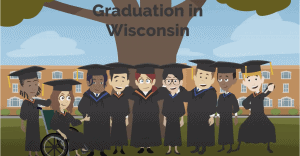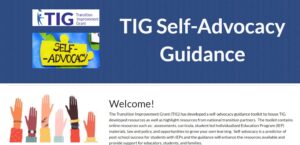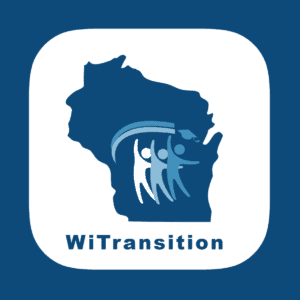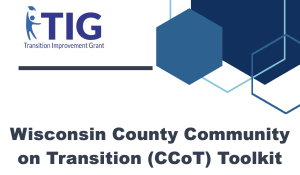Implementation Calendar
District
School
It’s a new calendar year and new semester. It’s the perfect time to do a check on your overall system. How are our students doing? How is our fidelity of implementation? What’s the impact of our professional development? What should we celebrate? What needs to be adjusted or re-energized? What can we stop doing?
It’s a new calendar year and new semester. It’s the perfect time to do a check on your overall system. How are our students doing? How is our fidelity of implementation? What’s the impact of our professional development? What should we celebrate? What needs to be adjusted or re-energized? What can we stop doing?
Make a date with your district schools and clarify assessment completion dates, data sources, and due dates for collecting them.
Make a date with your assessments and get to know them better. Take time to clarify assessment completion dates, data sources, and due dates for collecting them. Review vocabulary and conduct Tiered Fidelity Inventory (TFI) walkthroughs.
March your way to implementation fidelity by allotting time for schools to complete system self-assessments. Be sure to provide clear communication for reporting results back to the district.
March your way to implementation fidelity by completing your system self-assessments. This is also a good time to begin working on your gold or platinum Recognized Schools program application (by invitation).
April is time to reflect on your implementation journey and plan next steps as “what gets calendared gets done.” School improvement plans need time for the actions (meetings, professional development, collaboration, coaching, etc.).
April is time to reflect on your implementation journey and plan next steps as “what gets calendared gets done.” School improvement plans need time for the actions (meetings, professional development, collaboration, coaching, etc.).
May we remind you to get ready for the next school year? Early in the month, place assessment dates and meetings dates on the calendar for the next school year. Don’t forget to share them with school leadership teams!
May we remind you to get ready for the next school year? Early in the month, place assessment dates and meetings dates on the calendar for the next school year. Don’t forget to share them with the district leadership team!
Celebrate all the achievements you’ve made this year and thank everyone who made your success possible. It’s a great time to start or continue planning for next year!
Celebrate all the achievements you’ve made this year and thank everyone who made your success possible. It’s a great time to start or continue planning for next year!
Get started by organizing the upcoming year! Address staff turnover, prepare orientation for new staff, and confirm/adjust roles and responsibilities. Keep things fresh by bringing in opportunities for new people to lead.
Get started by organizing the upcoming year! Address staff turnover, prepare orientation for new staff, and confirm/adjust roles and responsibilities. Keep things fresh by bringing in opportunities for new people to lead.
Get ready for the school year by grounding in your vision, establishing common language, expectations, and building adult relationships; set the stage by providing high quality, professional development.
Get ready for the school year by grounding in your vision, establishing common language, expectations, and building adult relationships; set the stage by providing high quality, professional development.
Let’s get off to a strong start by making sure every school knows what’s expected! Allot schools time to teach, practice, and support academic and behavioral expectations.
Let’s get off to a strong start by making sure everyone (adults and students) know what’s expected! Take time to teach, practice, and support academic and behavioral expectations.
Make sure your schools are looking at the “October Catch” to see which students have at least one or two Office Discipline Referrals (ODRs). Do these schools need additional supports?
Now’s the time to take a look at the “October Catch” and see who has at least one or two Office Discipline Referrals (ODRs) in your school – do they need additional supports? Check in with their teachers to help guide next steps.
Communicate reminders for snow and weather-related expectations to all schools, families, and community members.
By November, students with two or more Office Discipline Referrals (ODRs) should receive additional supports so they can finish the school year successfully. Also, plan for snow and weather-related behavioral expectations.
Let’s get the second half of the year off to a great start by taking care of you during winter break. This work is all about adult behavior so take time to reflect on practices that worked well and ones that need improvement.
Let’s get the second half of the year off to a great start by taking care of you during winter break. This work is all about adult behavior so take time to reflect on practices that worked well and ones that need improvement.
Plan for and conduct school-wide celebration of success
Provides consistent acknowledgement of expected behaviors.
Plan mid-year booster training
Environments change throughout the year. Now’s a good time to revisit what further teaching is needed for behavioral expectations (playground with snow, slippery sidewalks and roads, bus, etc.) .
Acknowledge the adults in your building; they’re working hard
Keeps adults energized, which is important for sustaining the work
Plan for and provide professional development for staff
Build implementation knowledge and understanding for staff and how it affects their daily work.
Analyze, share, and adjust improvement/action plan from all school system self-assessment results
Provides evidence for where schools are along the journey. Data drives improvement/action planning and professional development. Reveals strengths and opportunities that determine system fidelity. Builds priority and efficiency of district supports. Celebrate successes!
Review district policy to ensure equitable access and outcomes
Using disaggregated data, review district policies and guidelines to ensure students have equitable access and outcomes.
Connect with schools in your district via peer support/community of practice
Connect and support schools across the district via networking events and open lines of communication for cross-school sharing.
Create an annual communication plan for stakeholders
Openly communicates the important work happening in the district to all stakeholders (students, families, staff, schools, school board, community, etc.). Having a plan, helps ensure it gets done.
Share staff perception assessments: Self-Assessment Survey (SAS) and/or All Staff results with staff
Opens communication and equity of voice back and forth from the leadership team to staff and staff to the leadership team. It's important to share identified needs, celebrate progress, and let staff know the team is using their data for continuous improvement.
Analyze, share, and action plan from all system self-assessment results and student outcome data
Provides evidence for where staff are along the journey. Data drives improvement/action planning and professional development. Reveals strengths and opportunities that determine system fidelity. Celebrate successes!
Monitor (or teach substitute teachers) about behavior and academic systems
Builds consistency across all adults in the building.
Identify students in need of additional behavioral supports
By October, we can identify many students in need of additional supports and begin providing that support.
Complete academic universal screeners
Timely data to support instructional decisions. Ensure instructional time is maximized.
Hold kickoff to teach school-wide expectations
We can’t expect students to know something we haven’t taught them.
Support staff in teaching classroom expectations
Ensures classroom expectations are tied to school-wide expectations.
Prepare staff for Self-Assessment Survey (SAS) and/or All Staff
Clarifies language and vocabulary for staff system self-assessments.
Complete staff perception assessments: Self-Assessment Survey (SAS) and/or All Staff
Strategic use of staff perception assessment data drives action planning.
Review instructional framework and establish coaching cycles
An articulated instructional framework supports teacher planning and collaboration, academic and behavior-social learning, and ensures that all students receive high quality, standards-aligned instruction.
Identify students/groups receiving interventions and additional support based on new data
Data should always guide and drive what practices you select to support each student.
Reserve time at a school board meeting
Having the school board knowledgeable of the good work being done is important for policy and funding decisions.
Send reminder to schools teams about upcoming system self-assessments (Self-Assessment Survey [SAS] and All Staff)
Schools that have district expectations and support are more likely to continue to assess their implementation and plan from the results.
Ensure family voice on your leadership team
Embraces, engages, and empowers families as authentic partners.
Finalize annual school improvement/action plan, meeting dates, and system self-assessment calendar
Increases likelihood of system self-assessment completion and system fidelity. Regularly scheduled meetings are essential for strong implementation.
Plan new and returning staff professional development
Keeps staff informed of systems in place for consistent implementation.
Review prior year data to ensure universal system addresses identified students’ needs
Provides timely opportunity to improve the system and student supports.
Plan and provide professional development for new staff
Build implementation knowledge and understanding for new staff and how it impacts their daily work.
Review purpose, expectations, and build capacity for systems’ self-assessments with school building leaders
System self-assessments guide team actions. Through system self-assessments teams monitor implementation progress, identify areas of growth, and determine system fidelity of an equitable, multi-level system of support.
Plan and provide professional development for new administrators
Provides all administrators an understanding and a collective commitment to the vision and mission of the district.
Develop communication plan
Establishes feedback loops with staff, families, students, and communities.
Establish system assessment coordinators for PBIS (behavior) and SIR (academics)
Coordinates assessments and updates school improvement/action plan to carry out improvements.
Finalize fall kick offs for staff, students, families, and bus drivers
Teaching expectations makes environments more positive and predictable.
Establish and Review District Communication Plan
A written district communication plan ensures that internal and external stakeholders have relevant and timely information. Establishes feedback loops with district, staff, families, students, and communities.
Continue planning for next year’s staff and student kick offs.
What gets calendared; gets done. Teaching expectations makes environments more positive and predictable.
Present end of the year data to all staff and celebrate successes.
Establishes feedback loops with staff (across teams), families, students, and communities.
Assess teaming structures and times from current year to adjust for next year.
Prepares team for changes in staff and the opportunity to make adjustments to optimize the team.
Team Booster
Prepares staff for improvement/action plan adjustments and professional development for upcoming year.
Disseminate the annual evaluation report
Share successes with families, communities, school board, and staff.
Schedule system self-assessment dates for next school year aligned with district leadership
What gets calendared; gets done. Assessing provides schools with a more complete understanding of their implementation.
Schedule all meetings for next school year
Establishes team meeting best practices and foundations.
Start planning staff and student kick off for next year
What gets calendared; gets done. Teaching expectations makes environments more positive and predictable.
Year-end review of district improvement/action plan
Determines status of activities, informs decisions and next steps, and allows time to modify the plan when data suggests the need. Celebrate successes!
Develop annual evaluation report
Contextualizes implementation strengths and areas of opportunity in your district’s equitable, multi-level system of supports.
Follow up with schools to get system self-assessment dates for next year
Clarifies what is happening at the school level and task is completed.
Analyze system self-assessment results
Measures implementation progress, identifies areas of growth, and determines system fidelity. Celebrate successes!
Complete school improvement/action plan based on system self-assessment results and relevant data (student outcomes data, walkthrough data, etc.)
Provides direction and focus to move toward or sustain implementation.
Determine professional development needs for next year and allocate time and resources for completion
As part of the school improvement/action plan, systematically address gaps and opportunities for stakeholder professional development.
Share Tiered Fidelity Inventory (TFI) and/or Schoolwide Implementation Review (SIR) results with staff
Provides understanding and evidence for school improvement/action planning and professional development. Celebrate successes!
Complete gold or platinum Recognized Schools program (RSP) application (by invitation); make sure Tiered Fidelity Inventory (TFI) assessment window is closed (qualification of the program)
Affirms the dedication and hard work schools and districts invest; Recognized Schools program applications and evidence are due April 30.
Analyze aggregate system self-assessment results
Provides evidence for improvement/action planning and professional development. Reveals strengths and opportunities that determine district-wide system fidelity. Celebrate successes!
Complete district improvement/ action plan based on aggregate system self-assessment results
Provides direction and focus to move toward or sustain implementation.
Gather all data sources (evidence) for Tiered-Fidelity Inventory (TFI) and/or Schoolwide Implementation Review (SIR) completion
Creates efficiency when your school's data is prepared ahead of time.
Clarify language and vocabulary used on Tiered-Fidelity Inventory (TFI) and/or Schoolwide Implementation Review (SIR)
Aligns everyone's understanding and responses around the line items.
Send reminder to schools teams about upcoming system self-assessments (TFI and/or SIR)
Confirms the assessment window will be opening soon for the Tiered Fidelity Inventory (TFI) and/or Schoolwide Implementation Review (SIR). Remind school leadership teams to verify assessments are calendared and dates are communicated to the district.
Enjoy winter break and reflect on practices that worked well
Recognize the hard work in your schools and refuel for the second half of the year.
Enjoy winter break and reflect on practices that worked well
Take time for you and refuel for the second half of the year.
Is funding in place to support implementation for the next fiscal year?
Ensure funds are available for coaching support, collaboration time, materials, and professional development that are proven to impact/improve implementation.
Leadership team conducts a mid-year review of school improvement/action plan and adjusts as appropriate
Monitoring line items related to school improvement/action plan goals are more likely to move to the next level of implementation.
Share progress with staff and the community
Data drives school improvement/action planning and continuous improvement. Celebrate successes!
Evaluate staff needs for professional development related to the goals
Helps to adjust professional development on your plan.
Schedule Tiered Fidelity Inventory (TFI) walkthroughs
Captures student and staff voice to be used during the TFI assessment as data.
Send reminder to schools teams about upcoming system self-assessments (TFI and/or SIR)
Confirms the assessment window will be opening soon. Remind school leadership teams to verify assessments are calendared and dates are communicated to the district.
Communicate value of system self-assessments to schools
Clarify why it is important to complete system self-assessments to inform the continuous improvement process and long-term action planning.
Schedule assessment windows for all system self-assessments for each district school for next year
Alerts schools so they can build capacity for all system self-assessment dates and ensure dates don’t overlap.
Communicate progress across teams and schools
 Recurring
Recurring
Task
Establishes timely feedback loops across the district.
Provide time for systematic continuous improvement
 Recurring
Recurring
Task
Schedule and prioritize district improvement/action planning, professional development, etc.
Communicate progress to families and stakeholders
 Recurring
Recurring
Task
Establishes feedback loops among staff (across teams and schools), families, students, and communities.
Complete system self-assessments for reading and/or math via the School-wide Implementation Review (SIR)
Measures implementation progress, identifies areas of growth in adult practices, and determines system fidelity.
Complete system self-assessments for behavior via the Tiered Fidelity Inventory (TFI)
Measures implementation progress, identifies areas of growth in adult practices, and determines system fidelity.
Begin gold or platinum Recognized Schools program application (by invitation)
Affirms the dedication and hard work schools and districts invest.
Schedule, plan, and facilitate monthly leadership meetings
 Recurring
Recurring
Task
Establishes team meeting best practices and foundations.
Share relevant data with staff
 Recurring
Recurring
Task
Provides understanding and evidence for school improvement/action planning and professional development. Celebrate successes!
Provide and assess ongoing development and coaching
 Recurring
Recurring
Task
Develops staff to implement practices aligned to school goals. Be sure to assess professional development to ensure it is impacting outcomes.
Assess fidelity of practices and interventions; cross-reference with student outcomes
 Recurring
Recurring
Task
Links student outcomes to instruction and supports effect decision-making.
Evaluate current practices (need for additional and/or removal of practices)
 Recurring
Recurring
Task
Ensures implementation is delivered as intended.
“When students feel safe and supported, they are truly ready and able to learn.” Laura Weaver & Mark Wilding
“When students feel safe and supported, they are truly ready and able to learn.” Laura Weaver & Mark Wilding
“When school climate validates and affirms each and every person in your school (students, staff, families, and community), a sense of belonging is established. A school can then build a positive and supportive culture that leads to academic success.”
“When school climate validates and affirms each and every person in your school (students, staff, families, and community), a sense of belonging is established. A school can then build a positive and supportive culture that leads to academic success.”
“Staggering assessments helps teachers keep things straight and not confuse the different surveys and assessments.” — Waupaca Learning Center
“Staggering assessments helps teachers keep things straight and not confuse the different surveys and assessments.” — Waupaca Learning Center
“How are the children?” – Masai Traditional Greeting
“How are the children?” – Masai Traditional Greeting
“What we do, how we speak, and what opportunities we provide our staff, students, and communities all affect the climate of our school.” – Sean Slade
“What we do, how we speak, and what opportunities we provide our staff, students, and communities all affect the climate of our school.” – Sean Slade
“Remember to celebrate milestones as you prepare for the road ahead.” – Nelson Mandela
“Remember to celebrate milestones as you prepare for the road ahead.” – Nelson Mandela
“Remember teams need to work together to reflect on current practices; expand, refine, and build new skills; share ideas; and teach one another.”
“Remember teams need to work together to reflect on current practices; expand, refine, and build new skills; share ideas; and teach one another.”
“Professional development should be ongoing, scaffolded, focused, and connected to the big picture and the critical components of district initiatives (trauma-informed schools, mental health screenings, social emotional learning, etc.).”
“Professional development should be ongoing, scaffolded, focused, and connected to the big picture and the critical components of school initiatives (trauma-informed schools, mental health screenings, social emotional learning, etc.).”
“When everyone handles infractions with instructional correction procedures, students learn that what happens when they misbehave is procedure and not personal.” – Algozzine, Wang and Violette
“When everyone handles infractions with instructional correction procedures, students learn that what happens when they misbehave is procedure and not personal.” – Algozzine, Wang and Violette
“Every child is unique. Every child has a different learning history. We’ve got to understand that prior learning history and we’ve got to map and match our instruction accordingly.” – Dr. Tim Lewis
“Every child is unique. Every child has a different learning history. We’ve got to understand that prior learning history and we’ve got to map and match our instruction accordingly.” – Dr. Tim Lewis
“Families are the experts on their children. Family communication should be intentional, collaborative, and ongoing. Communication with families is not a disciplinary action.”
“Families are the experts on their children. Family communication should be intentional, collaborative, and ongoing. Communication with families is not a disciplinary action.”
“Take a minute. Take a breath. Measure your words. What you say to a child today may very well affect every tomorrow of their life.” – Debra Pierce
“Take a minute. Take a breath. Measure your words. What you say to a child today may very well affect every tomorrow of their life.” – Debra Pierce




 TIG Self-Advocacy Guidance Google Site
TIG Self-Advocacy Guidance Google Site 
 Wisconsin County Community on Transition (CCoT) Toolkit
Wisconsin County Community on Transition (CCoT) Toolkit